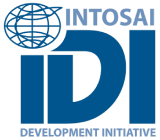
SAI Strategic Management is evolving
through continued support
In this chapter we will present the results of how SAIs’ organisational capacities are developing through enhanced SAI governance in the areas of strategic management, performance reporting, financial accountability, integrity, gender, human resource management and digitalisation.
Good planning practices are sustained over time
Strategic management is a continuous integration of strategy and implementation to enable SAIs to meet objectives and mandates, while allowing for adjustments along the way to facilitate this. As the IDI Strategic Management Handbook points out, the Strategic Plan is one of the most powerful tools the SAIs can have. The strategy formulation starts with an analysis of current situation and future needs, as a basis for developing the Strategic Plan. According to the Global Survey responses, 84% of SAIs have a Strategic Plan under implementation. Another 5 % is currently developing their new Strategic Plan. The proportion of around 90 % of SAIs having a Strategic Plan, remains around the same levels as in 2020 when 92% had a Strategic Plan In fact, the proportion of SAIs with a Strategic Plan has remained stable during the last decade.
It therefore becomes even more interesting to probe into what the SAIs strategic management practices look like. According to Global Survey responses, 95% of SAIs with a Strategic Plan or with one under development conducted a holistic assessment as a basis for developing the plan. Around half of SAIs respond that they have used SAI PMF and or a stakeholder analysis to inform their Strategic Plan, while 16% undertook a gender analysis. Stakeholder analysis seems to be done more often in Lower Income countries (average 65% in Lower Income countries vs 34% in HI-Income countries) and most frequently in AFROSAI-E (91%). SAI PMF assessments were utilised most often in Upper Middle-Income (UMI) Countries. In PASAI 87% of respondents reported using the SAI PMF to inform the development of their Strategic Plan. This approach was least common in CAROSAI and EUROSAI, with 35% and 37% respectively. Still, it seems this was the most common assessment tool for the two regions. Around 20% of SAIs also did various internal assessment as part of the process.11SAIs may use one or more of these assessment tool, and in extreme cases SAIs may use all of them.
[11] SAIs may use one or more of these assessment tool, and in extreme cases SAIs may use all of them.

Figure 20 – Assessment tools used by SAIs to inform the Strategic Plan
'Select all that apply' | Based on responses from 166 SAIs
71% of SAIs report that they have published their Strategic Plan. Compared to the 2020, this is a drop, but the change could also be due to SAIs who earlier published their plan, now are developing a new plan which is yet to be published. 94% of SAIs in ASOSAI report to have their Strategic Plan published, constituting the region where publication of the Strategic Plan is most widespread. SAIs in Lower Income countries publish their Strategic Plans more often than HI countries (LI, LMI and UMI 77% vs HI 56%).
SAIs were also asked which SAI capacity areas the Strategic Plan covers. While the topical response alternatives give us somewhat limited information, as the SAI haven’t indicated whether the topics translate into strategic objectives, some points are worth noting. For example, a description or assessment of the SAI resource situation is more likely to be included in Lower Income countries (42% vs 79%), most commonly in
Good practices in strategic management seems to be more globally applied by SAIs over time. 81% of SAIs report to have an Operational Plan that is explicitly linked to the Strategic Plan. This is the same level as in 2020. This is common within all regions but CAROSAI, and responses range from 73 to 96% of SAIs, while in CAROSAI only 48%. 77% state that the SAI’s budget is prepared in light of the operational plan(s) and ensures that all foreseen operations are allocated the required financial resources. This is a high number considering the operational uncertainties many SAIs are facing, given limitations in their financial autonomy.
Additionally, it’s worth noting that 58% of SAIs (against 53% in the GSR2020) has an emergency preparedness and continuity plan, which guides operations in case of disaster and adverse circumstances. It is possible that the
It is a recognised good practice in the strategic management cycle to report against the Strategic Plan. Yet, only around half of SAIs, 52%, monitor and report annually against their Strategic Plan. Reporting is carried out more regularly in OLACEFS, EUROSAI and AFROSAI-E. Of the SAIs that report that they have monitoring and reporting systems in place globally, 83% include results against annual targets in the Operational Plan and against strategic objectives set out in the Strategic Plan, 80% report on audit coverage, while 74% include financial and resource reports. 68% include reporting on institutional capacities (such as SAI Independence), while less than half include evaluation of risks related to the achievement of the Strategic Plan. Only 20% of SAIs cover all aspects in their reporting.
Figure 21 - If you have conducted a SAI PMF, have the results of your performance assessment been shared externally?
While a vast majority of SAIs use holistic assessment tools as a basis for their Strategic Plan, 57% SAIs reported that they carried out a holistic performance assessment during 2020-2023.12There is likely to be an overlap. Compared to 2020, there is a slight decline in the number of SAIs reporting doing an assessment. Since it is likely that some of the assessments were done in connection with the development of a Strategic Plan, SAIs’ strategic cycles will probably affect the results. 44% of SAIs report that they did a SAI PMF assessment. The proportion of published SAI PMF results, remain low with 12% globally. Amongst the SAIs who reported to have done a SAI PMF this represents 28%, seemingly an improvement, however, the number of SAIs confirming to have published is the same in both reports (21 SAIs).
[12] There is likely to be an overlap.
The continued practice of using Strategic Plans and linking these with the day-to-day operations, could partly be explained by continued capacity support in this area. The results on capacity development support received show that outside the main audit disciplines, strategic planning is the most common area of support.
Comparing SAI performance in this area since 2017, through a simple index, based on questions on Strategic Planning, Operational Planning and Reporting across the three last Global Surveys, show that there has been an improvement in the overall strategic management practices over this period. The results are presented in the graph below. The SAI improvement is moderately correlated (0.48) with receipt of support for capacity development in strategic management and/or the intention to develop capacity during the measured period. The country results shown in the index, suggest some SAIs were supported without improving practices, while some also improved practices, but without reporting to receive support. This could be improvement due to actions on own initiative or could represent underreporting of support, for example support that was received through a broader bilateral support programme, but where the component on Strategic Planning was not recognised. Despite the limitations in this measurement, it suggests that the continued focus on support in strategic management by IDI, regions and bilateral donors have led to more efforts in applying strategic management approaches to improve SAI governance.

Figure 22 – Improvement in Strategic Management Practices
Strategic Plan Index 2017 vs. Strategic Plan Index 2023 | Correlation is 0.48

Public sector accounting practices may help promote SAI financial accountability
Figure 23 – SAI publication of financial statements and external audit opinions by horizontal accountability level

For SAIs to demonstrate their own accountability and lead by example they should also develop annual financial statements that are audited and published.
Financial accountability practices amongst SAIs remain limited on a global scale. 70% of SAIs produce a set of financial statements. 20% of SAIs say they don’t produce a set of financial statements because of their lack of institutional autonomy, where the institution formally is a part of a Ministry or a Chamber of a Court. Financial statements for 57% of all SAIs are subject to external audits, and for 52% the external auditor issues an audit opinion on the financial statements. 46% of SAIs publish the financial statements and audit opinions. Considering only the SAIs who produce or can produce financial statements, 70% are subject to external audits and 67% receives an audit opinion.
The numbers are very similar to 2020 levels, suggesting that SAIs' own financial accountability practices haven’t improved much. Regionally, external audits of the SAI are most widespread in AFROSAI-E, EUROSAI and North America. Practices of external audit and publication of opinions increase with the levels of the horizontal accountability. This suggests functioning checks and balances not only demand more openness, but also create opportunities for SAIs to rely on existing tools, to hold themselves accountable.
We also compared the responses on financial accountability to data on financial reporting practices collected through the International Public Sector Financial Accountability Index for 2020. The project monitors the global status on country financial reporting bases and framework used by central and federal governments, differing between cash based reporting, partial accrual and accrual reporting.13International Public Sector Financial Accountability Index. Status Report 2021. Joint publication by CIPFA and IFAC. It is interesting to note that in countries where financial reporting systems have advanced to accrual basis, more SAIs report that they produce financial statements, subject them to external audit and receive and audit opinion. This suggests that the government systems for financial reporting and accounting, also helps advance SAIs efforts in improving their own practices in financial accountability. The Index’s Status report also underlines that certain drivers are crucial for this development, notably circumstances of public financial management reform, as well as local context, such as government structure and IT infrastructure. The latter factors are also affecting SAI development of accountability and reporting practices.
[13] International Public Sector Financial Accountability Index. Status Report 2021. Joint publication by CIPFA and IFAC.
Figure 24 - Our SAIs financial statements are subject to external audit
Results by Financial Reporting Basis
Figure 25 - Our external auditor issues an opinion on our SAIs financial statements
Results by Financial Reporting Basis
Figure 26 – Extent of SAI measures to deal with non-compliance with Code of Ethics by INTOSAI Region
SAIs monitor staff integrity
According to the Global Survey 2023, 95% of SAIs have a Code of Ethics, so this is almost universal. 87% of SAIs reports that staff are fully or mostly acquainted with the Code of Ethics. 77% fully or greatly monitor the application of the Code of Ethics. Monitoring practices are most common in EUROSAI, ASOSAI and North America. The same level of SAIs who monitor application also have measures in place for dealing with non-compliance. The existence of such a system also correlates inversely with levels of corruption in the countries, suggesting that the enforcement of integrity measures are more likely to be implemented in countries where the public sector is likely to have a sound system for dealing with integrity breaches.

Institutional constraints seem to hold back better human resource management practices
Managing human resources (HR) in a holistic manner forms part of good governance in SAIs. 55 % of SAIs state their HR strategy is aligned with the Strategic Plan and objectives. 37 % of SAIs say they address gender and inclusion in their HR strategy. The results suggest that human resource practices do not always align with the measures needed to reach strategic objectives.
Figures indicate that SAIs’ ability to strategically develop and manage their human resources could be limited by institutional factors. Only 64% of SAIs have full control over recruitment processes, while 72% fully manage promotions, and 78% internal organisation and appointments. Only 49% have full control over remuneration. Most SAIs adhere to public sector systems for salaries, which could make it challenging to attract the right staff, in cases where SAIs are competing with private audit firms. This would likely come in addition to overall budgetary constraints for operations. It is likely that although 79% of SAIs state they have full control over the HR planning, these aspects could affect implementation. Compared to the GSR2020, we can conclude that the level of human resources autonomy remains stable, both on the global and the regional level. These results could also explain why only 64% of SAIs declare that they recruit their staff based on SAI organisational needs. Regional distribution of SAIs who recruit their staff based on organisational needs, as shown below, suggests the proportion is higher than the global average in ARABOSAI, ASOSAI, EUROSAI, PASAI and North America. For CAROSAI, CREFIAF and OLACEFS, the limited autonomy in human resource management creates a risk that SAIs are unable to recruit staff with the right skill set. For AFROSAI-E whose results are on the global average, there has been a reduction since GSR2020, from 83% to 65%, while in ARABOSAI there has been a decline from 79% to 71%. The changes could be due to changes in composition of the survey population, but also possibly due to an improved understanding on SAI organisational needs and how recruitment is linked to them.
Figure 27 – SAI practices in basing recruitment plans on organisational needs and HR characteristics
Results by INTOSAI regions

In addition to these institutional limitations, there are also areas for improvement in the human resource management under the control of the SAIs. Only 53% have written procedures for recruitment processes, which also are published and ensure transparent recruitment processes. Results correlate positively with degree of control of HR-systems and practices. Individual performance appraisals take place in 71% of SAIs, and only 72% of SAIs have written job descriptions which define competencies and qualifications. Only 63% have established practices for remuneration and promotion which are generally followed in practice.
Staff retention is also a potential risk area for SAIs. Only 39% of SAIs have practices in place to encourage staff retention and succession planning. This suggest that many SAIs could face challenges in fulfilling their mandates when staff leaves, as it could pose a risk also for knowledge transfer and institutional memory. It’s possible that SAIs with limited autonomy develop a reliance on existing government structures which limits their motivation in forming and improving the human resource processes within their control. In summary, these findings suggest that the limited control over human resources represents a serious risk to build and sustain a staff of auditors who, over time, can build capacity and improve audit quality.

Growth in gender responsiveness
The GSR2020 concluded that there was a potential for SAIs to address gender more strategically. While the former section revealed that only 16% had applied a gender analysis during their strategic planning process, 40% of SAIs now state that their Strategic Plan promotes gender equality at the institutional level. This represents a small increase since 2020 (when 34% did so). However, another 40% respond that they are not addressing gender through their Strategic Plan. If we disregard the 11% of SAIs who currently don’t have a Strategic Plan, we see that gender is addressed in various manners in of the majority of SAIs strategic plans (55% against 45% of SAIs not addressing gender). Building capacity on gender organisational processes seems more common in countries with lower levels of democracy and income, for example 30% of SAIs in fragile countries received support on organisational processes, against 12% in non-fragile countries. For support to gender audits these are most common in EUROSAI and OLACEFS (45%) followed by AFROSAI-E (26%). As many donors have had a strong focus on gender equality it’s possible that the strong presence of gender activities in Lower Income countries also is a consequence of gender goals being integrated as part of international support schemes and capacity development initiatives.14One example is the GIZ supported AFROSAI programme Women Leadership Academy.
Figure 28 – Gender issues addressed by SAI strategies and plans

[14] One example is the GIZ supported AFROSAI programme Women Leadership Academy.
The data on how SAIs implement their strategies on gender sheds interesting light on the SAIs commitment to promote gender in daily operations. A gender policy is a set of regulations and principles on gender. 30% of SAIs report to have a gender policy, the same proportion as in 2020. In OLACEFS 67% of SAIs have a gender policy. In contrast only 14% and 11% have such a policy in ARABOSAI and PASAI, respectively. According to the global data, the majority is adopted in countries labelled as liberal democracies, where 62% of SAIs have a gender policy. For SAIs with a gender policy, monitoring is frequently done through indicators and targets in the Strategic Plan (45%). These practices are more common in countries with higher levels of horizontal accountability.
21% of SAIs have a gender strategy that defines a comprehensive pathway to help SAIs reach their objective on gender equality. The results, although quite low, is still an increase compared to GSR2020 (15%).
38% have established a gender focal point in the SAI, a sharp increase since 2020 (25%). In fact, there’s a positive development in this area, as 60% of SAIs now have institutionalised gender responsibilities within the organisation, against 40% in GSR2020. In OLACEFS 87% of SAIs have a gender focal point and in CREFIAF the number is 73%. The increase in global numbers seems to stem largely from an increase in OLACEFS. 57% of SAIs in ARABOSAI and 51% of SAIs in EUROSAI report lacking an institutional gender role.
In the Global Survey 2023, SAIs were also asked to rank the importance of gender amongst other characteristics often covered in the definition of inclusive work environments, notably ethnicity, age, disability and poverty. The results show the gender and disability are the aspects most highly ranked by SAIs, as areas to address.

Figure 29 – Areas for promoting equality, ranked according to importance to SAIs

Digitalisation efforts have not increased since the last Global Stocktake
Despite the necessity to work more remotely during COVID-19, SAIs insufficiently used the momentum to digitalise operations.
As in GSR2020, only half of SAIs have a digitalisation strategy, and the same proportion of SAIs have a budget for future technology investments. In the Global Survey 23 SAIs were also asked which steps they were taking to digitalise operations. These steps covered organisational aspects, such as financing, staffing and strategic considerations. The graph below shows that none of the proposed processes, related to strategic aspects of digitalisation, are universally applied by SAIs. The most common practice is the assignment of IT support to staff with appropriate skills, which had been done in 64% of SAIs, indicating that one-third of SAIs don’t even have a designated staff to address IT issues in the organisation daily. It is positive to see that 42% of SAIs have assessed their ICT maturity, but more concerning that only 31% have defined the intended benefits of digitalisation.
Figure 30 – Steps SAIs are taking to digitalise operations across the SAI
The regional results can further show us the need to have all elements in place for a successful digitalisation process. In OLACEFS 73% of SAIs have integrated digitalisation in their Strategic Plan, and equally in their annual Operational Plan. Despite this, for only 27% of SAIs in the region the strategic direction is based on an assessment of ICT maturity, and only 40% have defined the benefits of digitalisation. Furthermore, only 40% have budget for ICT infrastructure and investments.
In addition to the organisational and infrastructure challenges, a key fundament for succeeding with digitalisation of operations, is development of digital competencies. Globally, less than half of SAIs have a plan for digital competency in the organisation (41%) or offer training for staff to master existing digital tools for management and governance (44%) More offer opportunities for competency raising in use of new technology to advance audits (51%).
When asked about which work processes they have digitalised, almost two-thirds of SAIs confirm to have established a system of recording and maintaining audit documentation digitally. Half of the responding SAIs can provide staff with remote access to internal SAI systems. Half of the responding SAIs operate their planning tool and HR management digitally. Out of the 12% that have not digitalised any of the work processes below, we find half of CREFIAF’s members (47% of CREFIAF), while the rest is spread across the other regions. In CREFIAF no countries have yet digitalised audit documentation, and less than 10% have digitalised organisational processes mentioned. When being asked about reasons for challenges in digitalisation, CREFIAF members mainly explain this by lack of digitalisation in the external environment and lack of resources and capacity. This is also in line with global results on challenges, where a shortage of resources are cited by 56% and the lack of digitalisation in the external environment mentioned by 45%.
Figure 31 – Work processes SAIs have digitalised



